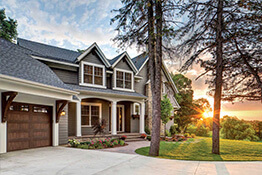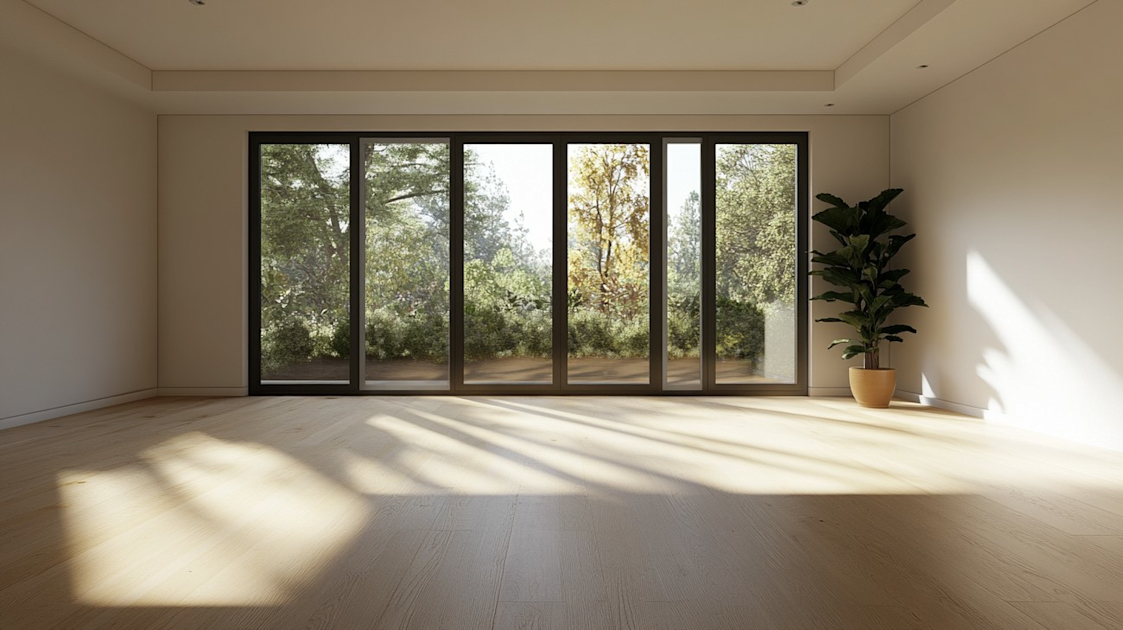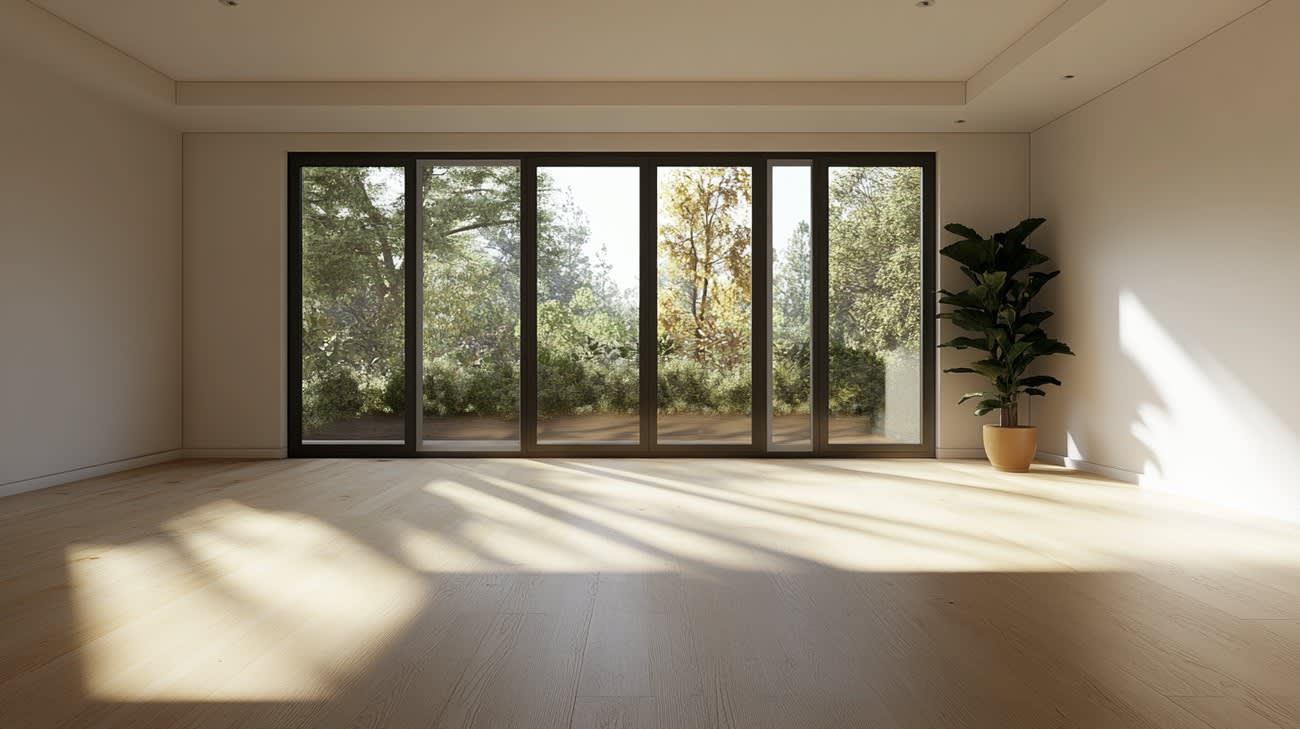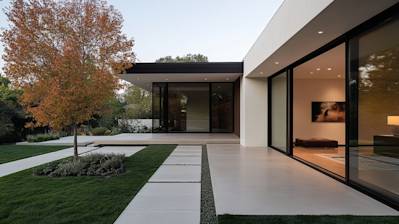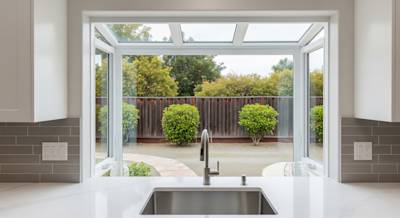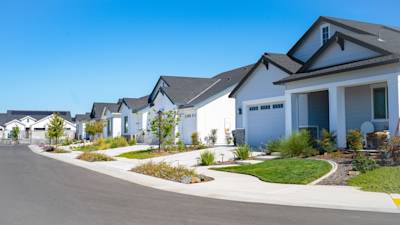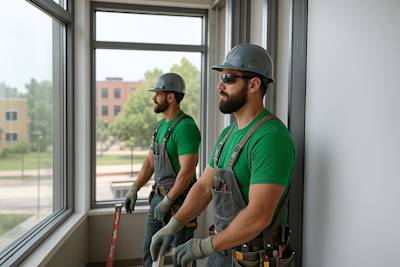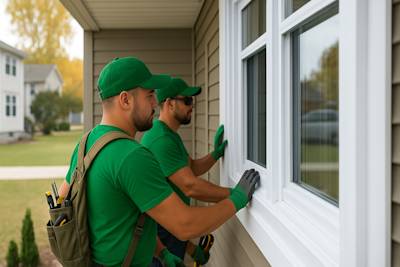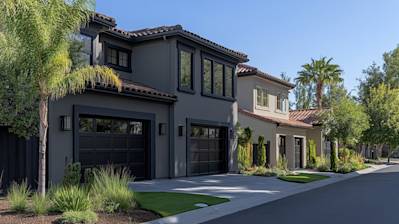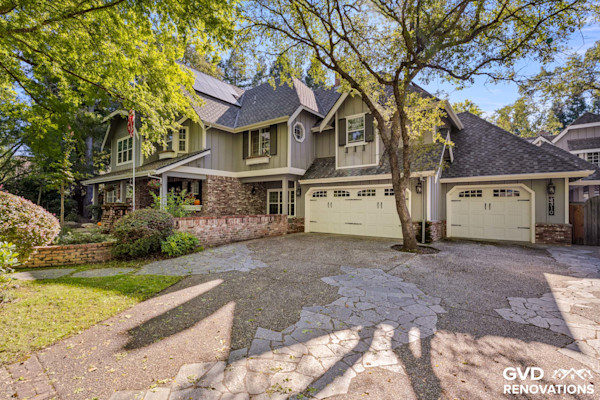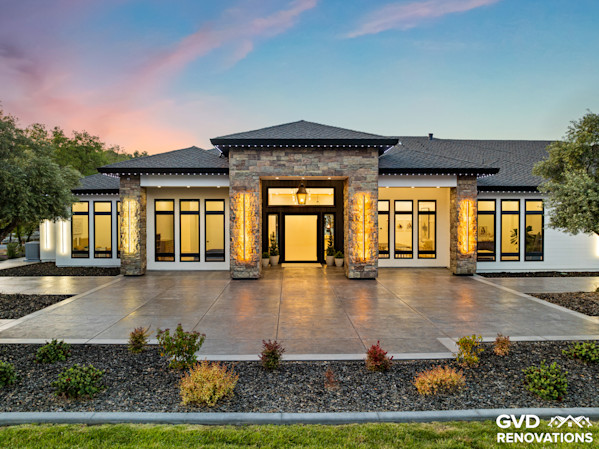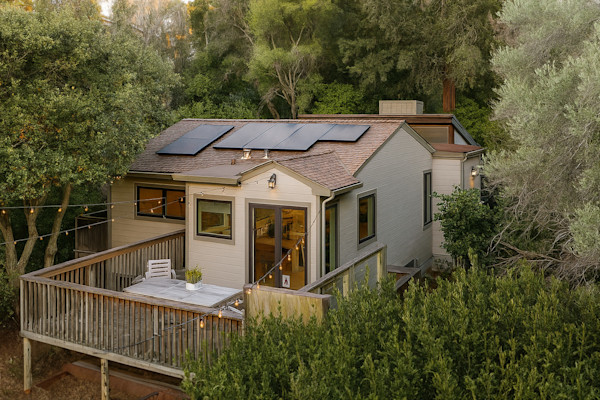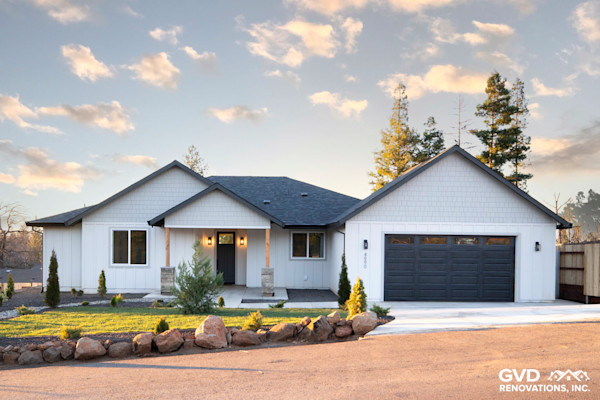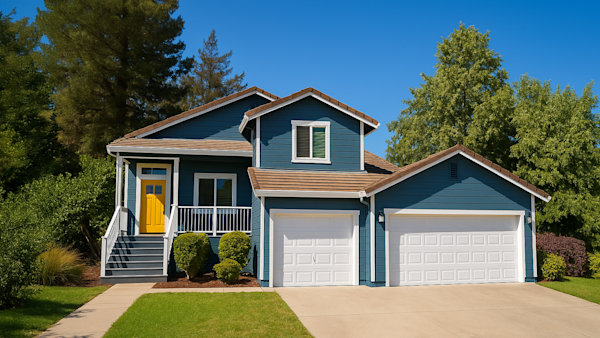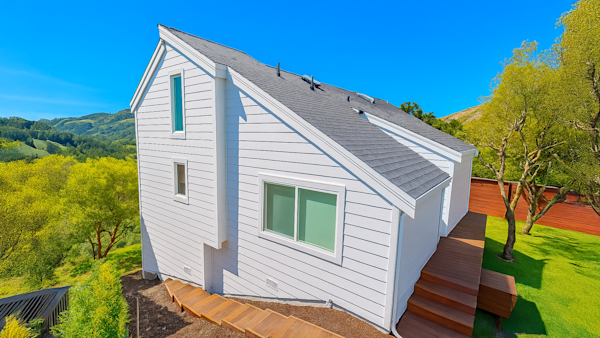Among the numerous types of windows on the market today, none provides the clear, unobstructed view quite like casement windows. With their wide opening capabilities and their sleek design, casement windows are a favored choice for homeowners seeking versatility, energy efficiency, and style. They're a stage, spotlighting the lush greenery of your backyard or framing a breathtaking city skyline view.
Understanding the Basic Structure of Casement Windows
As versatile as they are vibrant, casement windows hinge on one side and swing outward when you open them. With a handle or crank at the base, you can open the window as little or as much as you like, allowing for optimized comfort and airflow.
The Significant Traits of Casement Windows
Different types of casement windows share common traits that make them distinct:
Single or Double Design: Casement windows can be either single or double. A single casement window has one pane that cranks out, while a double casement, also known as a French casement window, has two panes that open outward.
Frame Material: Casement window frame materials include vinyl, wood, aluminum, fiberglass, or a combination of these. Each material contributes to the window’s durability, energy efficiency, and aesthetic appeal.
Exploring the Types of Casement Windows
Now, let's dive into the main types of casement windows to understand the unique features and benefits each brings to the table.
Double Casement Windows
Also known as French casement windows, double casement windows consist of two sashes that open outward. They’re designed without a static, vertical post in the center, allowing for an unobstructed, wide view. Perfect for larger spaces, these windows let in a significant amount of light and promote better ventilation.
Push Out Casement Windows
Push out casement windows, as the name suggests, open outwards when pushed. Instead of a crank mechanism, they have a handle that’s easy to operate. These windows are known for their vintage appeal and the added elegance they can bring to a home.
Inswing Casement Windows
Unlike traditional casement windows, inswing casement windows hinge at the side and open inwards. They’re favored for tight exterior spaces, like areas with close adjacent buildings or narrow passageways. Despite their opposite opening direction, inswing casement windows still offer increased ventilation and unobstructed views.
Key Components of Casement Windows
Here are some critical parts of casement windows that impact their functionality:
Sash: The movable part of the window that holds the glass.
Hinge: An important functional component that allows the window to open and close.
Crank: A handle at the base of the window for easy opening and closing.
Weather Stripping: Helps to insulate and weatherproof the window.
Operator: This is the mechanism, often a hand crank, that operates the window sash’s opening and closing.

Frequently Asked Questions about Types Of Casement Windows
How are the single-frame and double casement windows different?
Single-frame casement windows have one large pane of glass contained within a single frame. These provide an unobstructed view and allow maximum natural light into the room. Double casement, often called French casement windows, consist of two separate casements that open away from each other. These offer a wider view and a classic aesthetic.
What are push-out casement windows?
Push-out casement windows, as the name suggests, open by pushing the window out. They are often style with a handle instead of a crank, which traditional casement windows typically have. This type of window offers simplicity and sophistication in design, making spaces appear more elegant.
How are inswing casement windows unique?
Just opposite to the standard casement windows, inswing casement windows swing inward instead of outward when opened. These windows can be a great solution for difficult-to-reach areas, and they are easy to clean and maintain. However, they may not be ideal in limited indoor spaces due to their inwards-opening nature.
How do awning and hopper casement windows function?
Awning casements are hinged at the top, and they open outward from the bottom. This makes them useful for rainy areas as they can remain open during showers while preventing water from entering the room. Hopper casement windows are hinged from the bottom and open inward from the top, making them a top choice for basement and small spaces.
What materials are commonly used for casement windows?
Casement windows can be made from a variety of materials, including wood, vinyl, metal, and fiberglass. Each one possesses different properties - wood offers a classic look and excellent insulation, vinyl is affordable and low-maintenance, metal such as aluminum is durable and resilient, and fiberglass is robust and highly energy-efficient.
Which types of casement windows are best for ventilation?
Standard, awning, and French casement windows are all excellent for ventilation. They open wide, allowing cool breezes to enter. Awning casement windows can be left open even during rain, hence facilitating airflow. French casement windows lack a central post, which further contributes to a good circulation of air.
What are the energy efficiency features in different types of casement windows?
Double-glazing is common across all types of casement windows, providing excellent thermal performance. Vinyl and fiberglass materials offer superior energy efficiency due to their insulation properties. Additionally, casement windows seal tightly when locked, thus preventing air leakage and improving energy efficiency.

Pros of Casement Windows
Smooth Operation
Single-Handed Operation
An absolute triumph of casement windows is their effortless operation. These types of windows come with a crank mechanism, allowing them to be operated with just one hand. You can easily open and close your window, a convenience that isn't the case with other types of windows such as sash windows.
Unobstructed Opening
Unlike sliding or double-hung windows, casement windows completely swing open. This allows for an unobstructed view and full ventilation. As such, casement windows are an ideal choice for spaces that need ample ventilation, like kitchens and bathrooms.
Superior Security
Multi-Point Locking System
Casement windows come with a multi-point locking system, which provides superior security against burglars. This enhanced security feature is due to the window's design; thus, it doesn't require you to spend extra cash to make your home more secure.
No Open Avenues for Intruders
The design of casement windows doesn’t leave a lot of room for intruders to force their way in. Since they don’t use a track system and the windows open outwards, it’s very unlikely for an intruder to open them from the outside.
Energy Efficiency
Excellent Insulation
Casement windows typically offer better insulation than other window designs, which tends to reduce energy consumption in heating and cooling your home. Thanks to their tight seal, casement windows can keep cold air out during winter and trap cool air inside during summer.
Customization Options
Casement windows can come with double or triple glazing, further improving their insulation properties. This can lead to significant savings on energy bills over the long term.
Cons of Casement Windows
Limited Opening
Despite providing an unobstructed view when open, casement windows do not open as fully as other window types. When opened, the window pane swings outwards and is held at an angle, limiting the opening size.
Incompatibility with Air Conditioning Units
Casement windows cannot accommodate most traditional window air conditioning units due to their design. As such, you may need to install a portable or central air conditioning system, which may not be suitable for all homes.
Potential Obstruction
Casement windows that open outwards can create an obstruction if they open onto a heavily trafficked area, such as a sidewalk or a popular outdoor patio. Besides posing a risk for damage, the window can also pose a safety risk if it obstructs a pathway.
Higher Costs
Casement windows tend to be more expensive than other window types, such as double-hung or sliding windows. So, while they bring about security and energy efficiency benefits, their high initial cost can be a major deterrent for some homeowners.
Maintenance Requirements
Since casement windows have more moving parts than other window types, they tend to require more maintenance over time. These parts often relate to the clasp and crank mechanisms that allow the window to swing open and shut. Repairing these mechanisms can add to the long-term cost of your casement window.
Limited Screen Options
Casement windows typically have screens on the inside, which may not be to everyone’s preference. Screens on the inside can trap bugs and make it more challenging to clean the window from indoors. While this is not a significant factor, it can be a drawback for some.
Lack of Design Variety
While casement windows offer great functionality, they restrict some design options. Unlike double-hung or sliding windows, casement windows only open outwards. This could potentially limit your design preference and aesthetic choices.

Myths and Misconceptions about Casement Windows
Among the many window types available on the market, casement windows have been an enduring choice for homeowners for their elegance, practicality, and efficiency. However, as with anything popular, numerous myths and misconceptions surround casement windows. This article will debunk these misunderstandings to provide a more accurate understanding of these unique windows.
Misconception: Casement Windows are Not Secure
Myth: Casement windows are less secure than other window types
Many people believe that casement windows are less secure because they open outwardly and could be easily forced open. However, this is far from the truth.
Casement windows are actually one of the most secure types of windows. When closed, the sash pushes securely against the window frame, which makes it very difficult to break open from the outside. Additionally, casement windows typically come equipped with multi-point locking systems, offering further security compared to windows with a single latch.
Misconception: Casement Windows are Not Suitable for Certain Architectures
Myth: Casement windows only suit traditional style homes
It's a common misconception that casement windows are best suited for older, more traditional architectural styles. While casement windows indeed do add a classic touch, they are also very versatile and can fit nicely into modern and contemporary architectural styles. Their sleek design and clean lines can enhance the aesthetics of any home.
Myth: Casement windows are not appropriate for small spaces
Some might think that because casement windows need space to swing outwards, they're not suitable for small or narrow areas. Yet, their design makes them ideal for such spaces. Since they don’t slide horizontally, casement windows are very effective in ventilating a small room, making them an excellent choice for compact areas.
Misconception: Casement Windows are Not Energy Efficient
Myth: Casement windows are less energy efficient than other window types
On the contrary, casement windows are known for their high energy efficiency. Their design allows for minimal air leakage – when they are closed, casement windows seal tightly, keeping cold drafts or hot air out. As a result, they help maintain the indoor temperature, reducing the need for excessive heating or air conditioning, and leading to energy savings.
Misconception: Casement Windows are Hard to Use
Myth: Casement windows are difficult to operate
This is one misconception that couldn't be further from the truth. The design of casement windows involves a simple crank mechanism for opening and closing, which is quite easy to operate. Therefore, these windows can actually be an excellent choice for individuals who find it hard to push, lift, or slide windows.
Misconception: Casement Windows are Not Durable
Myth: Casement windows do not last as long as other window types
The durability of a window often comes down to the quality of its construction and installation along with appropriate maintenance, not its style. Casement windows, when well-maintained, can last as long as any other window type. Additionally, their mechanical cranks and hinges can often be easily repaired or replaced, extending their lifespan.
In conclusion, it's important to do your own research and not fall prey to the many myths and misconceptions surrounding casement windows. Their security, versatility, energy efficiency, ease of use, and durability make them a popular choice for many homeowners around the world.
Summary
So, that wraps up the essential types of casement windows folks. Whether it's the single, double, or push-out casement window, each one is a great way to add character and practical advantage to your home. Remember, the design and structural details are all about personal preferences and the architectural requirements of your property.
Diving deep into the world of types of casement windows, it's evident each one has its unique charm and employment. From enhancing your views, letting in the breezy air, to improving insulation, each type deserves a nod. But, before you make a choice, consider your needs first, and then choose the right style and material that compliments your home's aesthetic.
And, there you have it! All the types of casement windows you need to know about when deciding on a home remodeling or construction project. Whether you choose based on classic appeal or functionality, your choice of casement window will surely make a difference in the overall look and feel of your space. So, keep this guide handy and bring a winning touch to your home with your favorite type of casement window!
About GVD Renovations & Remodeling
GVD Renovations & Remodeling is a top-notch, reliable remodeling company based in Roseville, CA. We’re genuinely committed to transforming your space into something truly spectacular. Our team of professionals encompasses a wide range of expertise, including kitchen renovations, bathroom restorations, siding installations, and window replacements. We bring years of experience to the table and believe that quality workmanship combined with the utmost respect for our clients is the key to our success. At GVD Renovations & Remodeling, we create spaces that mirror your vision while respecting your budget - because we believe in turning houses into dream homes! Let us be your partners in creating a space that you are proud to call home.
This article is for general information only and not professional advice. Always consult a licensed contractor before making project decisions. Product details, specifications, or warranties may have changed since publication. Brand and product mentions reflect opinion, not endorsements or guarantees.
Tags: types of windows, casement windows, window styles,
